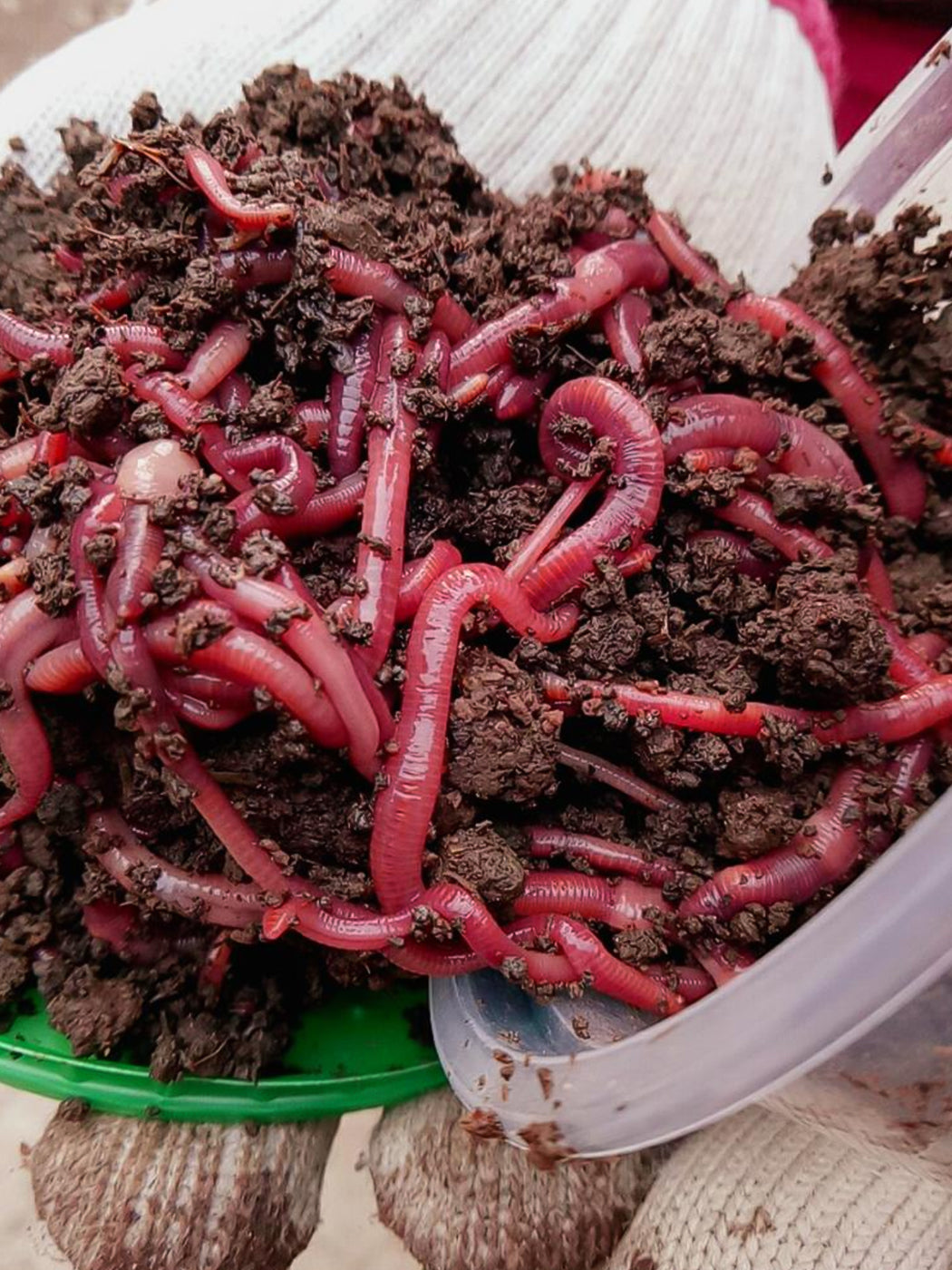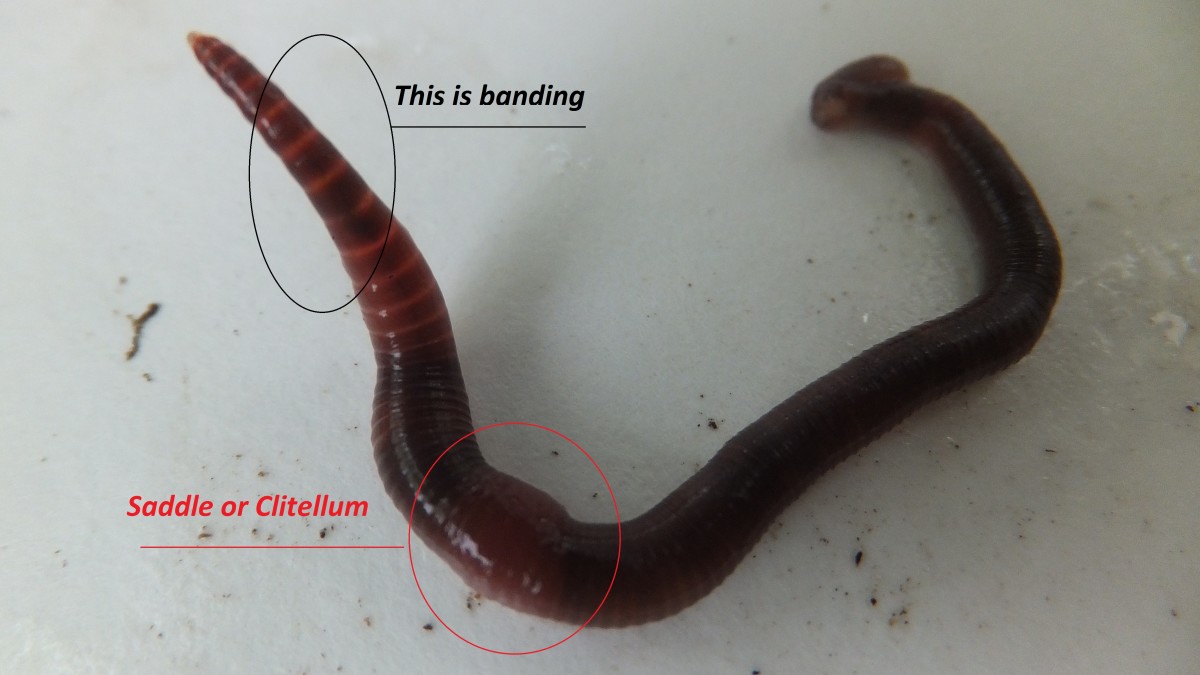Red Wiggler Express: A Trusted Source for Fresh Worms and Bait
Red Wiggler Express: A Trusted Source for Fresh Worms and Bait
Blog Article
Exactly How Red Wigglers Can Change Your Composting Experience
The assimilation of red wigglers into composting methods offers a transformative strategy to throw away administration and soil enrichment. These microorganisms not only expedite the decay process however additionally generate nutrient-dense vermicompost that boosts soil health and wellness and fertility. Their flexibility to numerous settings makes them an ideal choice for both beginner and skilled composters alike. Nevertheless, comprehending the specific demands and advantages related to keeping a thriving worm population is essential for optimizing their potential. What strategies can one utilize to make sure an effective vermicomposting experience?
Benefits of Red Wigglers
Red wigglers, scientifically called Eisenia fetida, are a foundation of efficient composting systems as a result of their impressive ability to break down raw material efficiently. These worms stand out in changing kitchen scraps, lawn waste, and various other organic materials into nutrient-rich compost, generally referred to as worm spreadings. Lake Hickory Bait. This process not only minimizes land fill waste yet additionally adds to sustainable horticulture methods
One of the primary advantages of red wigglers is their high reproduction price, allowing them to occupy a composting atmosphere rapidly. This rapid reproduction improves decay prices, leading to faster compost production. Additionally, red wigglers prosper in a varied series of conditions, making them adaptable to numerous composting arrangements.

Establishing Your Worm Bin
(Lake Hickory Bait)To create a reliable worm bin for composting, careful focus should be offered to its design and environment. An ideal worm container must be constructed of products that are long lasting yet enable essential airflow, such as plastic or timber. The size of the container can vary, however a volume of approximately 1 square foot per extra pound of worms is an excellent starting factor.
Guarantee that the bin has drain openings to protect against water buildup, which can bring about anaerobic conditions destructive to the worms. Additionally, incorporating ventilation openings will certainly help keep correct humidity degrees and oxygen circulation.
Following, it is necessary to give bed linen for the worms, which can consist of shredded newspaper, cardboard, or coconut coir. This bedding not just supplies a habitat for the worms however additionally aids in moisture retention.
Position the worm container in a place that preserves a temperature variety of 55-77 ° F(13-25 ° C) to enhance worm task. Prevent placing the bin in direct sunlight or extreme temperature levels. By adhering to these standards, you can produce a favorable atmosphere for red wigglers, improving the effectiveness of your composting procedure.
What to Feed Your Worms

(Red Wiggler Express)Red wigglers especially appreciate soft, wet foods like watermelon peels, cucumber peels, and banana peels. However, it is essential to prevent feeding them citrus fruits, onions, and garlic, as these can be destructive to their health. In addition, cooked foods, milk products, and meat needs to be strictly prevented, as they can cause smells and bring in pests.
To keep ideal problems, it's advisable to chop larger scraps into smaller sized pieces, facilitating quicker disintegration. Start by introducing tiny quantities of food and keep an eye on the worms' intake price; adjust appropriately to stop overfeeding, which can create an unhealthy environment. Supplying a constant feeding timetable will certainly assist maintain your worm population flourishing while enhancing the total effectiveness of your composting initiatives. By understanding what to feed your worms, you prepared for an effective and sustainable composting experience.
Keeping a Healthy Habitat
Developing a flourishing composting setting for red wigglers requires focus to their habitat, as it directly affects their health and wellness and productivity. The excellent environment ought to keep a balanced dampness degree, normally between 60-70%. Extreme moisture can lead to anaerobic problems, while not enough moisture might dehydrate the worms.

The bed linen product in the garden compost need to vary and shredded, incorporating products like cardboard, paper, and coconut coir. This not only offers a comfortable environment but likewise works as a food source. Lake Hickory Bait. Consistently looking for odors or indications of bugs can assist recognize prospective concerns prior to they escalate
Lastly, preserving a well balanced pH level, preferably in between 6 and 7, ensures a favorable habitat for red wigglers, promoting their capability to procedure raw material successfully. By addressing these factors, you their explanation can produce a sustainable and efficient composting ecosystem.
Harvesting and Making Use Of Compost
Gathering garden compost from a worm bin is a fulfilling process that changes organic waste right into nutrient-rich material for yards and plants. This can be done using techniques such as the "light" method, where worms are drawn in to light and can be scooped away from the leading layers, or by moving the garden compost to one side of the bin and including fresh bedding to the various other side, encouraging the worms to move.
As soon as the worms are removed, the staying garden compost can be sorted to remove any larger fragments or undecomposed material. The end product needs to have a dark, brittle texture and a positive earthy odor, showing that it is prepared for use. This abundant garden compost can be applied directly to garden beds, blended right into potting dirt, or utilized as a top clothing for potted plants. By incorporating vermicompost into your gardening methods, you not only enhance dirt fertility however likewise promote healthy and balanced plant development and lasting horticulture techniques.
Conclusion
Incorporating red wigglers into composting techniques dramatically enhances the disintegration procedure and contributes to the production of nutrient-rich vermicompost. The resulting worm spreadings boost dirt structure, fertility, and microbial task, eventually promoting much healthier plant development.
Report this page